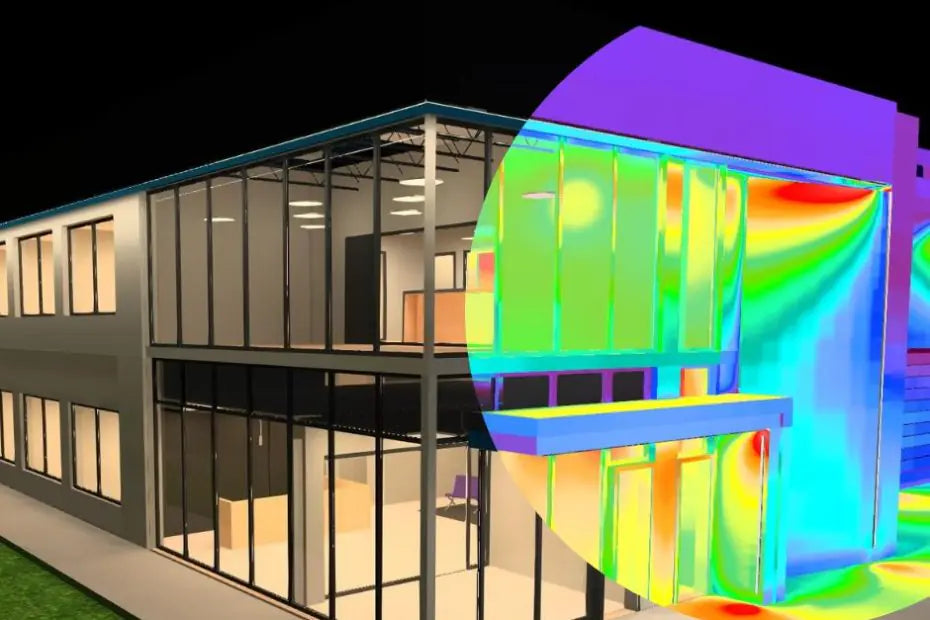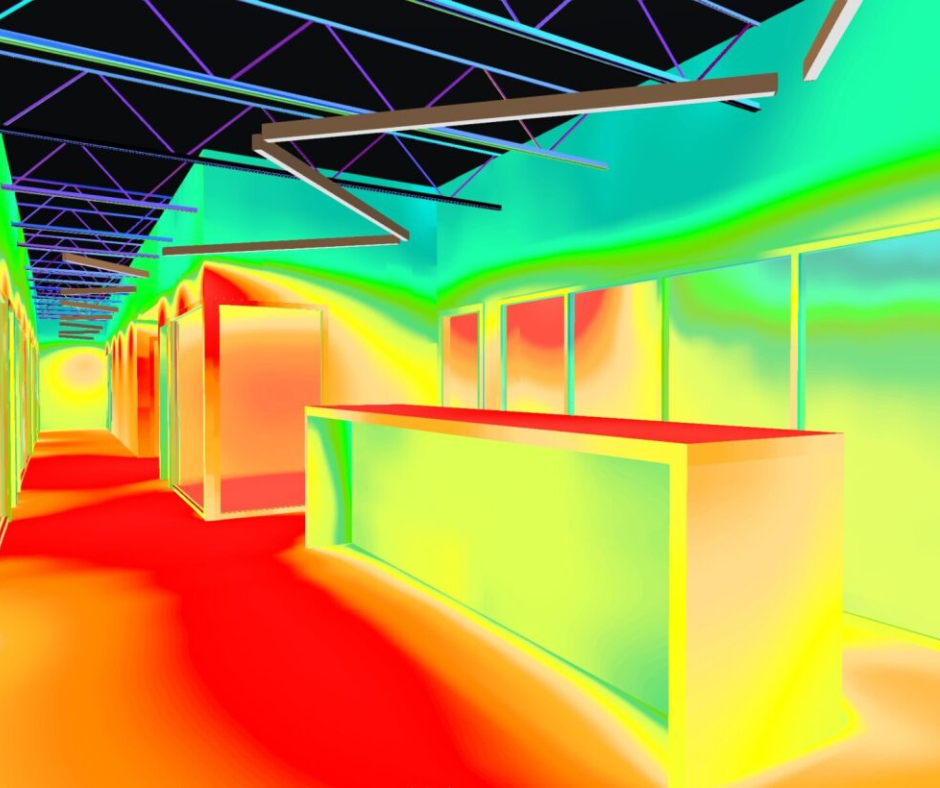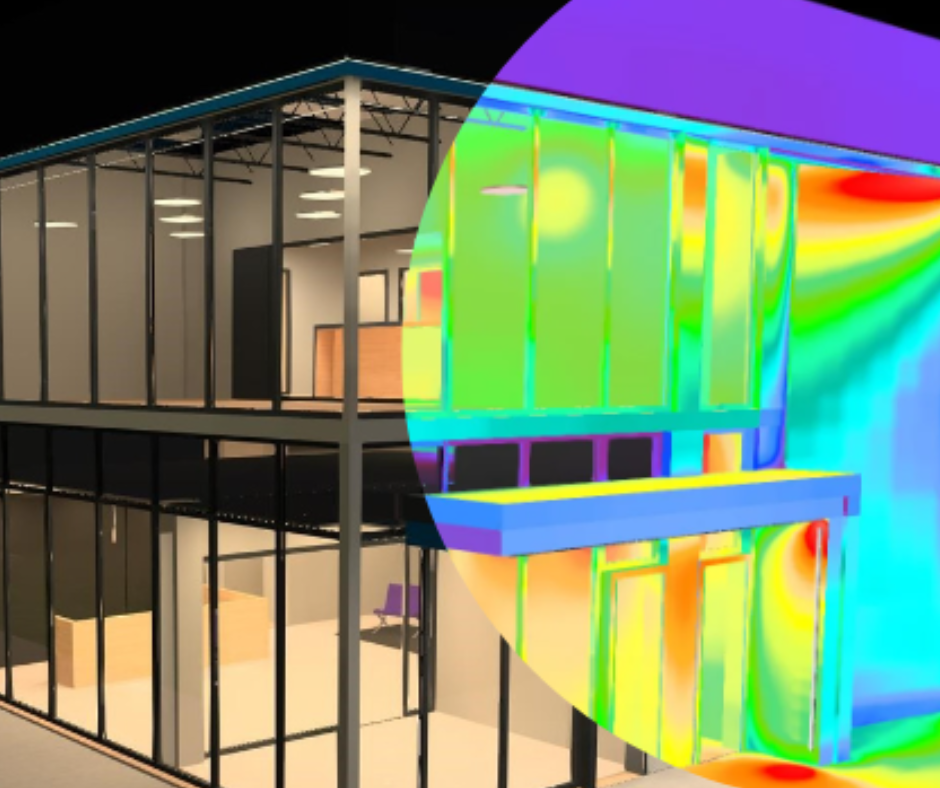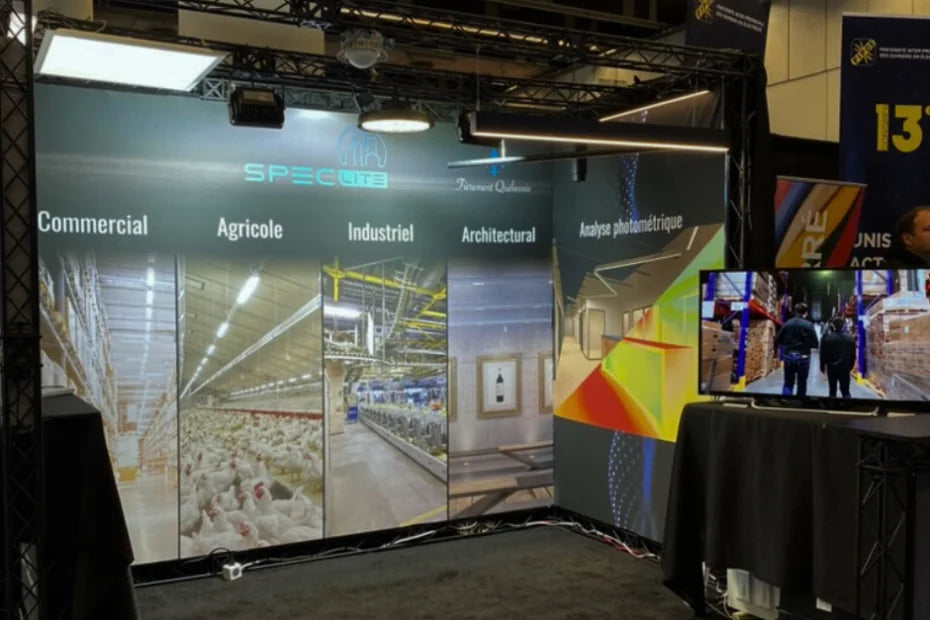What is Photometric Analysis?
Description of Photometry
Photometry is a process that measures various aspects of lighting as perceived by the human eye. It is possible to measure the light produced by a luminaire, for example, based on the technical data of its light distribution. Thus, photometric analysis can be performed via simulation before a project is even designed. It is also possible to carry out on-site photometric surveys for an existing project, for example, to confirm that the desired lighting objectives have been achieved.
Photometric Units of Measurement
Photometry is made possible through many technical parameters. The most well-known unit of measurement is the lumen, which represents luminous flux. It allows for easy comparison between different luminaires to assess which one produces the most visible light.
The main element measured is illuminance, also known as lighting level, calculated in lux or foot-candles, depending on the unit of distance. An illuminance level of 500 lux means there are 500 lumens per square meter, which is roughly equivalent to 50 foot-candles, or 50 lumens per square foot. Illuminance thus describes the amount of light received on a given surface. Measurements can be taken on the floor, on a desk, at various heights, and even vertically on a wall, for instance.
Photometry requires an understanding of several other measurement units, such as candela (luminous intensity), CCT (correlated color temperature), CRI (color rendering index), luminance (the light perceived by the human eye), exitance (the luminous flux leaving a given surface), glare, reflectance, and contrast.
What is the Purpose of a Photometric Analysis?
Lighting may seem simple but is actually very complex. Photometric analysis is used to evaluate a project to select the optimal luminaire, and to plan the appropriate quantity and placement to achieve the desired lighting goals. Photometry is absolutely necessary before undertaking a project. While it is possible to roughly estimate the required luminaires for simpler projects, it is highly recommended to conduct a complete analysis.
The Importance of Photometry in Project Design
When paying close attention to lighting, it becomes evident that some spaces are greatly enhanced by their lighting. Properly planned lighting can create true masterpieces, while poorly planned lighting can be disastrous and even counterproductive. For example, in a retail store, insufficient lighting in some aisles may deter customers from exploring them. Lighting standards are complex for a reason. Proper planning, such as for a production center, can enhance employee productivity and reduce accidents.
Thus, photometry comes into play very early in project design. It usually needs to be coordinated with the building's architecture. Photometry is essential not only for professional spaces such as offices, factories, and stores but also for public spaces. Among other things, photometry ensures sufficient lighting levels for task performance, safety, creating welcoming atmospheres, showcasing products or architectural features, and much more.
What Tools and Data are Needed?
The IES File and Photometry
Photometric analysis was historically done manually without the aid of software. Although this manual process is much longer, some methods are still used for quick evaluations. For example, using a luminaire’s candela rating, one can quickly estimate which luminaire would be ideal to achieve a certain lighting level at a given height through a simple formula.
To perform a photometric analysis, the IES file of the targeted luminaires is required. An IES file is a text file containing all the luminous distribution information of a luminaire. This file, provided by manufacturers, is created using an integrating sphere and a goniophotometer. It contains, among other things, the luminaire’s luminous flux in lumens.
Photometry Software
For comprehensive analysis, the main software used includes AGI32, Dialux, and Relux. These programs enable highly complex analyses, including 3D renderings of the project where lighting results can be visualized. A simple project might take just a few minutes, while a very complex one could take several days. Most of the time is spent designing the 3D model of the building, including key interior and exterior elements that affect lighting. Once the building is modeled, various luminaires, layouts, and quantities can be tested to achieve the project’s goals. This step is also very time-consuming but crucial. Sometimes satisfactory results can be achieved quickly, but ideally, multiple tests should be performed to aim for the best outcome.
What is the Photometry Process?
Gathering Project Data
Each photometric analysis is tailored to the specific project. First, technical information about the project must be gathered. For simple projects, basic building dimensions and the main use of the space may be sufficient. For example, an analysis can be performed for an 80’ x 100’ warehouse with a 20’ ceiling height. These data points are enough for a simple study and luminaire recommendation.
However, it is always preferable to work directly from construction plans provided by an engineer or architect. This allows for much more precise advice by taking additional aspects of the project into account. Plans are essential for more complex projects involving multiple rooms. Sometimes, intervening before final plans are issued enables luminaires to be included in the design.
Defining Project Objectives
Objectives vary greatly depending on the project and the client. They are determined based on the following criteria: compliance with IESNA lighting standards, specific needs, budget, energy efficiency, aesthetics, and visual comfort. In simple cases, we might suggest luminaires that meet the standards at the lowest possible cost. In more complex cases, we may suggest luminaires that enhance the building's architecture, offer maximum visual comfort, and are highly aesthetic—typically associated with a higher budget.
Conducting the Photometric Analysis
Once the data is gathered and objectives are defined, the photometric analysis can be performed in the software to find the best possible solution. Often, the initial proposal will be adjusted based on changes to the building plans or client preferences. Modifying the analysis is relatively easy and quick.
Who Can Perform a Photometric Analysis?
A photometric analysis must be conducted by a lighting specialist. The complexity of the factors involved requires a thorough mastery of lighting concepts. Speclite offers a team of lighting specialists available to effectively advise electrical contractors. Our approach focuses on understanding each project’s needs to propose the optimal solution. We have over 10 years of experience in the lighting field and offer a very competitive range of LED products.





